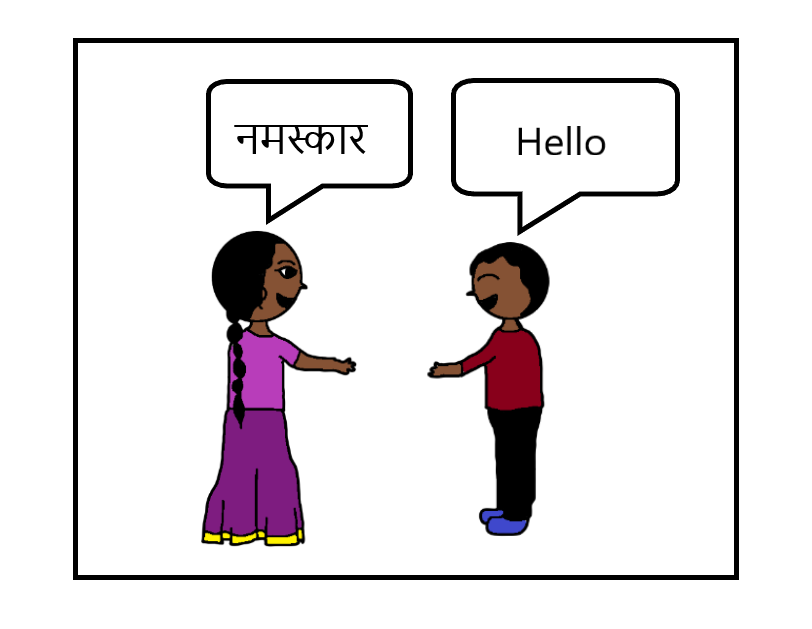Post Adoption Factors that Impact Education
Last week we looked at the impact of children’s pre-adoption history on their educational needs. This week we’ll look at their lives after the adoption to identify factors impacting their education. We will also discuss how to find support and intervention services.
What do we have to be aware of in their lives after adoption with regard to their education?
The first is language. Children adopted by parents who speak their mother tongue can communicate and engage in the same language post-adoption. But what happens if the parents don’t speak the child’s language? The child has to learn the language spoken in the new home or state. Next, they are expected to learn English. For most children in India, their exposure to English education begins when they start school.
Research says that children who speak their mother tongue well and have a large vocabulary are able to learn a second language much faster than kids who have limited vocabulary in their first language. If your children stopped using their mother tongue after adoption, expect some delays in their journey to read and write at school. Simply put, their brain is working overtime trying to figure out what to say and in which language!
The other consideration is your children’s age. Young children have more years to learn how to read and write in English while older children will need a more intensive approach to learning the language. If children have language-based needs, the gap in their learning and education grows wider. Unfortunately, in the Indian education system, we don’t have a way to teach English as a second language to children who switch the medium of instruction in the middle of primary or high school. Nor do we have bilingual classrooms. So our children don’t get the support they need to learn content in a completely new language. Do you see why language can be a barrier to learning and education?
My girls went to Marathi medium schools when they lived with their parents and Hindi medium schools when they lived at the institution. When they came to live with us, they had to switch again to learning subjects like science, social studies, and maths in English. There was no way they could have kept up with their peers! They needed several years to learn basic and academic vocabulary in English, and there was no way we could rush them.
The second factor is anxiety. The frustration at not learning and performing like others creates self-doubt, leading to severe stress. The result is that children start to worry, developing anxiety.
What does anxiety look like?
Anxiety shows up as behaviour! Children may be fearful and clingy with constant worry, or restless and unable to complete tasks. They may shout a lot to cover up their fear and be highly irritable. One of our daughters’ spent more than a year shouting “I don’t care” for everything, while another couldn’t follow basic routines without an adult holding her hand and guiding her every step of the way. One sounded rude and brash to an outsider, while the other was whiny and clingy.
Our job was to address the underlying anxiety about approaching new tasks. For one, it was understanding that adults would not judge her for not knowing how to participate in the activity and to ask for help. For the other, it was understanding that if she made a mistake, no one would hit her or ridicule her, and that she was going to be okay. Our reassurances are not a one-time intervention. As the girls master some skills, they are exposed to new skills and are expected to learn them. We, the adults, continue to monitor their anxiety and coping skills.
Anxiety can also be why your child refuses to participate in the classroom. One of our kids has some level of difficulty in processing information. On some days, she is right on target, and on others, she cannot remember what to do even in familiar situations. Her teachers have always remarked that she does not like participating in group discussions. As the content became more and more challenging at school, we found small notes in her bag, “Watch what others are doing. Do the same thing.” There were more of the same with directions on what to do in different situations. This little girl realized that she couldn’t always keep up with the teacher and compensated for it by observing others and copying them. After a few years, she began to complain about going to school.
Anxious children are not available to learn. So when they don’t pay attention in class, complete assignments, or seem to forget what you just told them, they are not doing it on purpose.
The third factor to consider is how children attach to the adoptive family. Children feel secure when they form stable long-term relationships with an adult who is affectionate and responds to their needs kindly and quickly. Children adopted from institutions go through two steps of separation. At first, they lose their birth family and find themselves in a completely new setting with new adults. They are uprooted once more when placed with the adoptive family and must get used to a new home and new caregivers. It doesn’t matter what we think of their caregivers or living conditions at the institution. To them, these were the familiar adults.
Our oldest children remember their parents quite well and love to talk about their relationship with their birth mother. When they moved to the institution and the adoption paperwork was being processed, the institution assigned an adult to care for child Y. She had the most challenging time attaching with us for the first year because she had lost a caring adult twice over! Grief over the loss of their birth family, the caregivers, and peers in the institution interferes with learning new routines and social rules at home and school.
So, analyze and identify the underlying reason for your child’s difficulties in school. Then you can find the right kind of educational and emotional support for your children and your family.
Read more to learn about international adoptees learning English as a second language. Some of these considerations apply to inter state adoptees in India as well.
Other episodes in this series:
Educational Needs of Adopted Children





